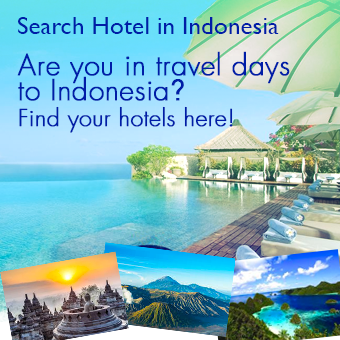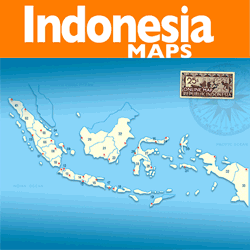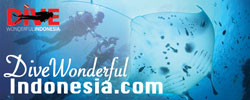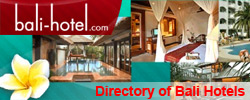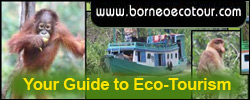Teluk Cenderawasih National Park
Teluk Cenderawasih is a national park with the widest waters in Indonesia. There is a wealth of amazing marine life in this area. Teluk Cenderawasih National Park or TCNP has become a representative of coral reef ecosystems, beaches, mangroves and tropical forests in Papua. This is a place that can be a strong reason for you to extend your tour schedule while in West Papua.
Teluk Cenderawasih is a heaven for many plants and animals both on land and in water. Then the most awaited is to meet and interact with the underwater giant, the friendly whale shark. Meeting the biggest fish on earth is a diver's dream.
Teluk Cenderawasih is a bay surrounded by several islands, including; Biak Island, Yapen Island and the mainland of the island of Papua. Administratively, its territory is in Teluk Wondama Regency and Nabire Regency, West Papua Province. Its location is on the edge of the Pacific Ocean and is a continental plate area so that it has a wealth of abundant flora and fauna. This national park has 14 types of protected flora and most of them are dominated by cassowary species.
You might think that Raja Ampat is the richest, but Teluk Cenderawasih has more stunning views by offering direct interaction with whale sharks. This area includes 18 islands with a coastline of about 500 kilometers. The entire marine reserve area is a habitat for various types of birds and marine animals, such as giant mussels, turtles, sharks, dolphins, and dugongs.
Teluk Cenderawasih National Park has about 1,453,500 hectares area stretching from the east of the Kwatisore peninsula to Rumberpon island. Covering 89.8% of the ocean with coral reefs around 5.5%, about 3.8% mainland islands and coastal lands around 0.9%. You don't have to explore everything to enjoy the beauty of Teluk Cenderawasih, you only need to visit some interesting islands; Yoop island, Nusrowi island, Mioswaar island, Numfor island and Rumberpon island.
The percentage of live coral reaches 65.64%, has about 36 species of birds, 196 species of mollusks, 209 species of fish and whales and dolphins. This national park area is also home to four protected turtle species: the hawksbill turtle (rretmochelys imbricata), the green turtle (Chelonia mydas), the olive ridley turtle (lepidochelys olivaceae) and the leatherback turtle (dermochelys coriacea).
Teluk Cenderawasih is the largest marine conversion area in Indonesia as well as being a research center for whale sharks (rhincodon typus) in the world. In Kwatisore, whale sharks often come to the surface and are used to interacting with fishermen. Generally they appear around Bagan-a floating house for fishing, which can be found along the waters of Kwatisore.
Teluk Cenderawasih National Park is a heaven for international marine and underwater travelers. This area also has a cave tour on Mioswaar island. There is skeleton of the Wandau tribe ancestors in this cave and it is believed to be the first human to come to this island. The same thing also exists on Numfor Island where there are human skulls, antique plates and carved chests that have high historical and cultural value.
Tourist Activities
The green hills in TCNP (Teluk Cenderawasih National Park) surround this bay so beautifully decorated with hundreds of seagulls. Visitors can enjoy the view accompanied by the sunset and armed with coconut water or can directly pick it. Along the coast there are mangrove forests and animals. Usually, divers who come here will live aboard to explore the many dive points in TCNP.
The most interesting is the Whale shark in Kwatisoore. This tame giant animal has about 14 meters length, but only eats small fish and plankton. This whale shark can be summoned by throwing the castle fish into the sea and then this beautiful animal will pop up to the surface of the water. Do not be surprised, many divers when snorkeling or diving swim so close to this animal. However, no matter how amazed you are at the beautiful animal that became the discovery of this decade's big fish, still don't touch it. Visitors can also meet the whale sharks at Ahe, part of the Harlem archipelago or about 1.5 hours from Nabire by boat. Traveling by live aboard is the most logical way to explore the many dive points in the TCNP area which are difficult to reach, scattered and far from the mainland. Choose the right tour operator or agent according to your needs. Your operator will arrange all your needs for a day's stay on board. They will also direct you to many dive points, arrange equipment, check currents, wait and guide you during your dives to serve your food needs.
Accommodation
There are no hotels and inns in the Teluk Cenderawasih National Park area. In general, dive operators provide services to stay on board the ship or so-called live-aboard for 4-10 days. All daily necessities are available here, from bedding, food, fresh water, equipment and diving guides and others. Dive packages like this are indeed more expensive than other package options, but live-aboard can take you to visit and explore the small islands scattered in TCNP.
However, if you intend to spend the night in residential area, you can contact the manager to be able to help you rent houses from local residents.
Transportation
To visit TCNP, you can take a plane to Biak city, Papua. From Biak, take another plane to Manokwari or Nabire. Then you will continue the journey by motor boat as far as 95 km.
Or if you from Nabire airport, you can continue the journey to Teluk Cenderawasih Bay using a motorboat for 38 km or about 3 hours.
From Jakarta, Surabaya, Makassar and Jayapura there are ship facilities to Manokwari and Nabire. From there you can use a longboat in about 6 hours to Teluk Cenderawasih National Park, precisely on Rumberpon Island. Or you can also go from Manokwari to Ransiki by land vehicle for about three hours, followed by a motorboat for about 2.5 hours. There is also a PELNI pioneer ship that usually stops at this national park but only once a month.
Tips
The best time to visit Indonesia's largest national park is from May to October, although whale sharks are always there all year round. You must first obtain permission from the manager of this national park or the local government. This is for the safety of the visitors.




